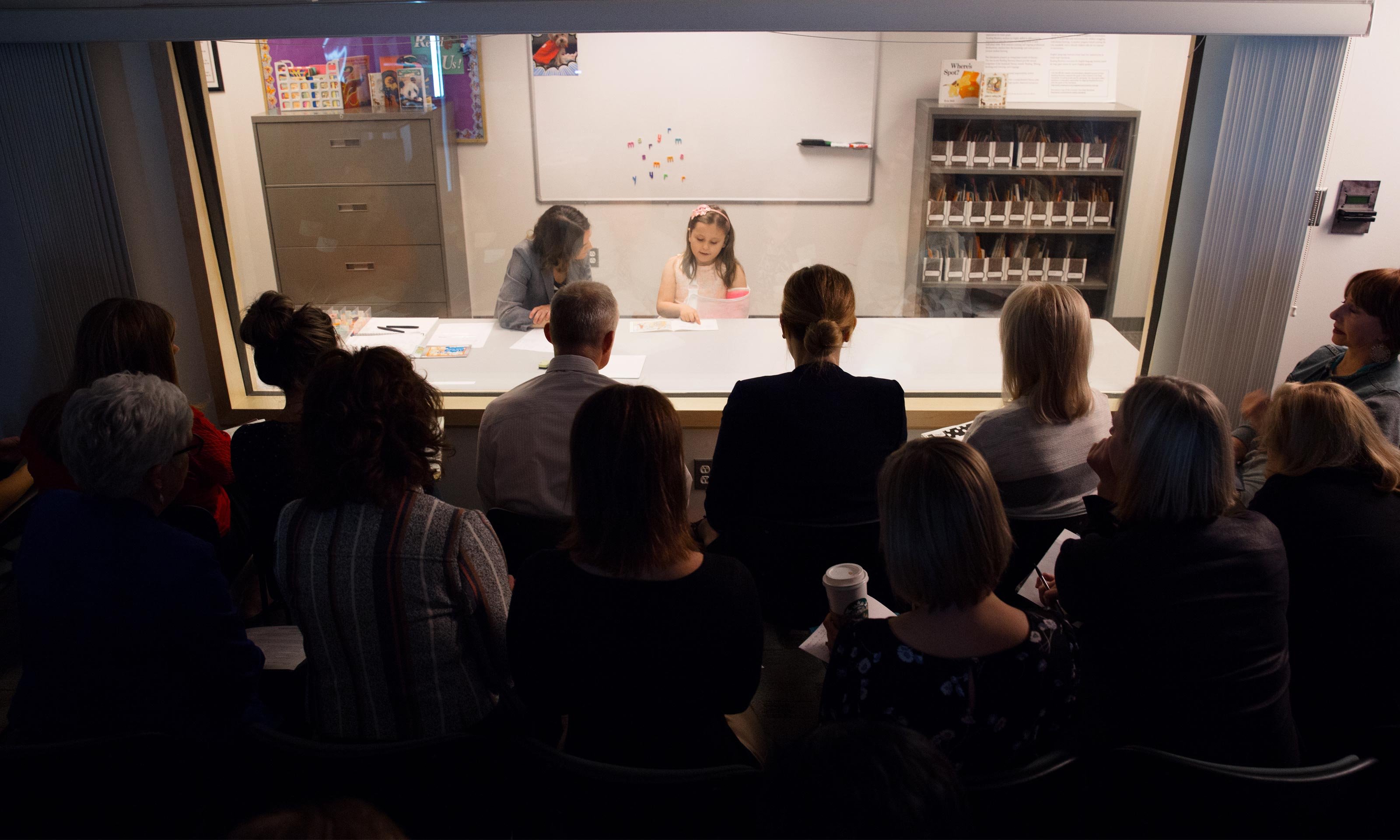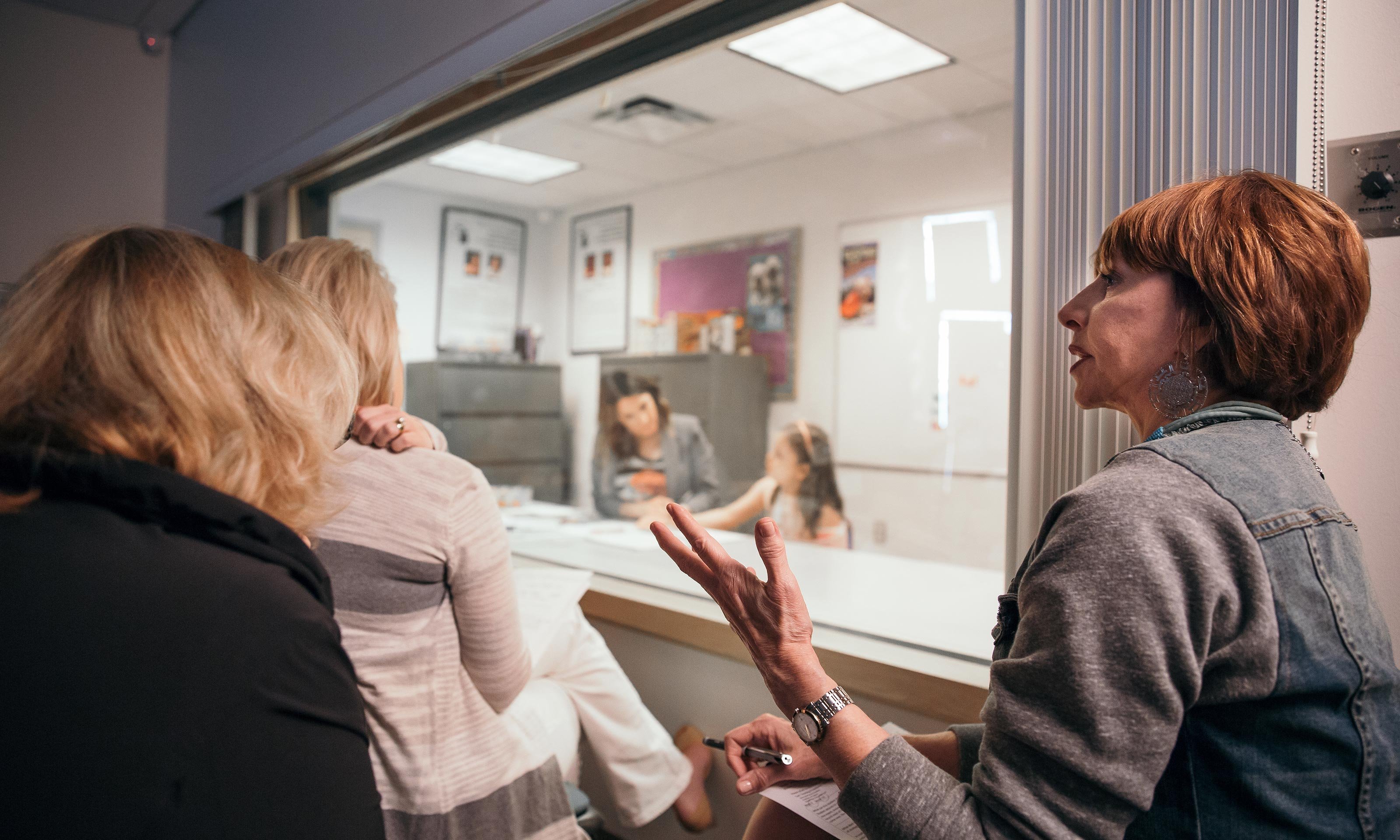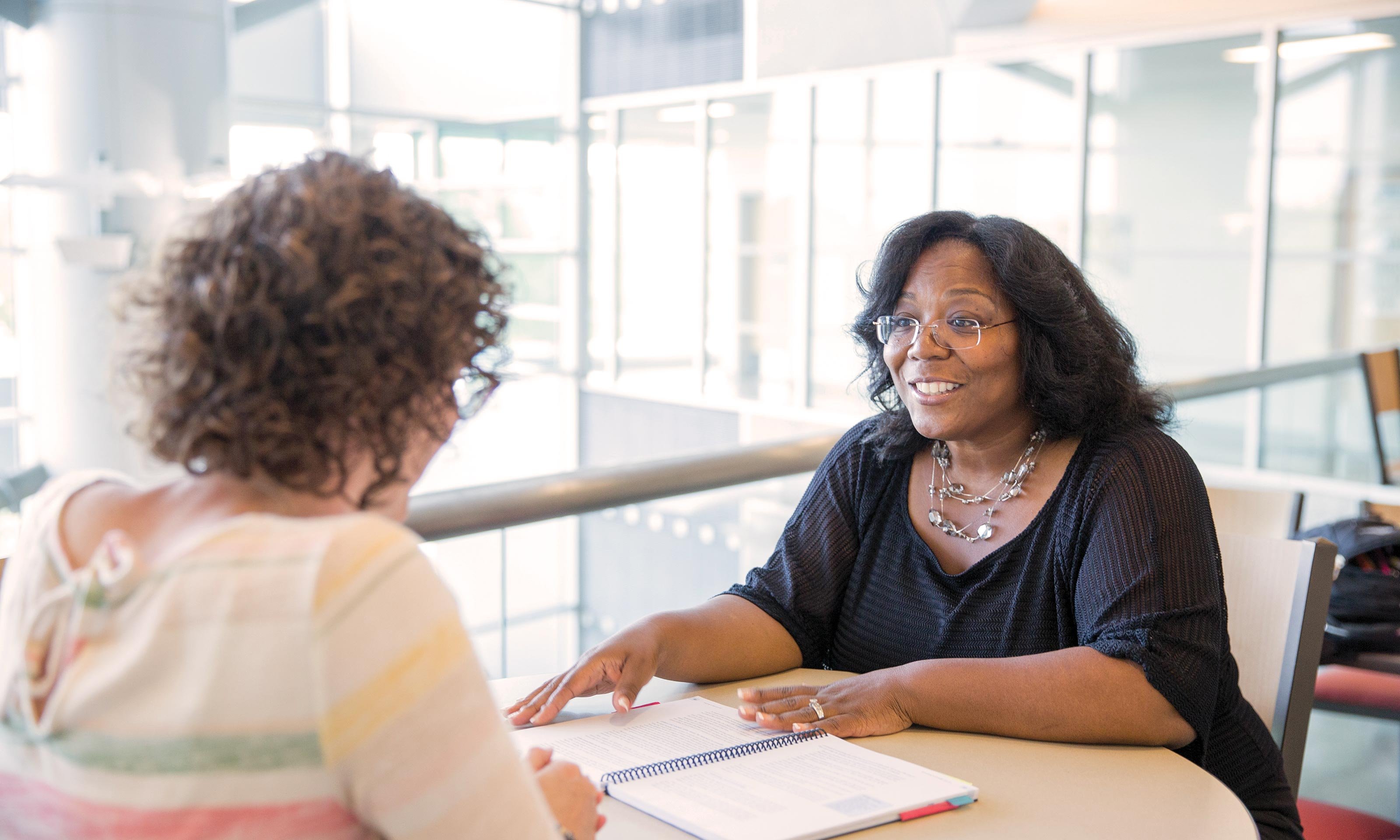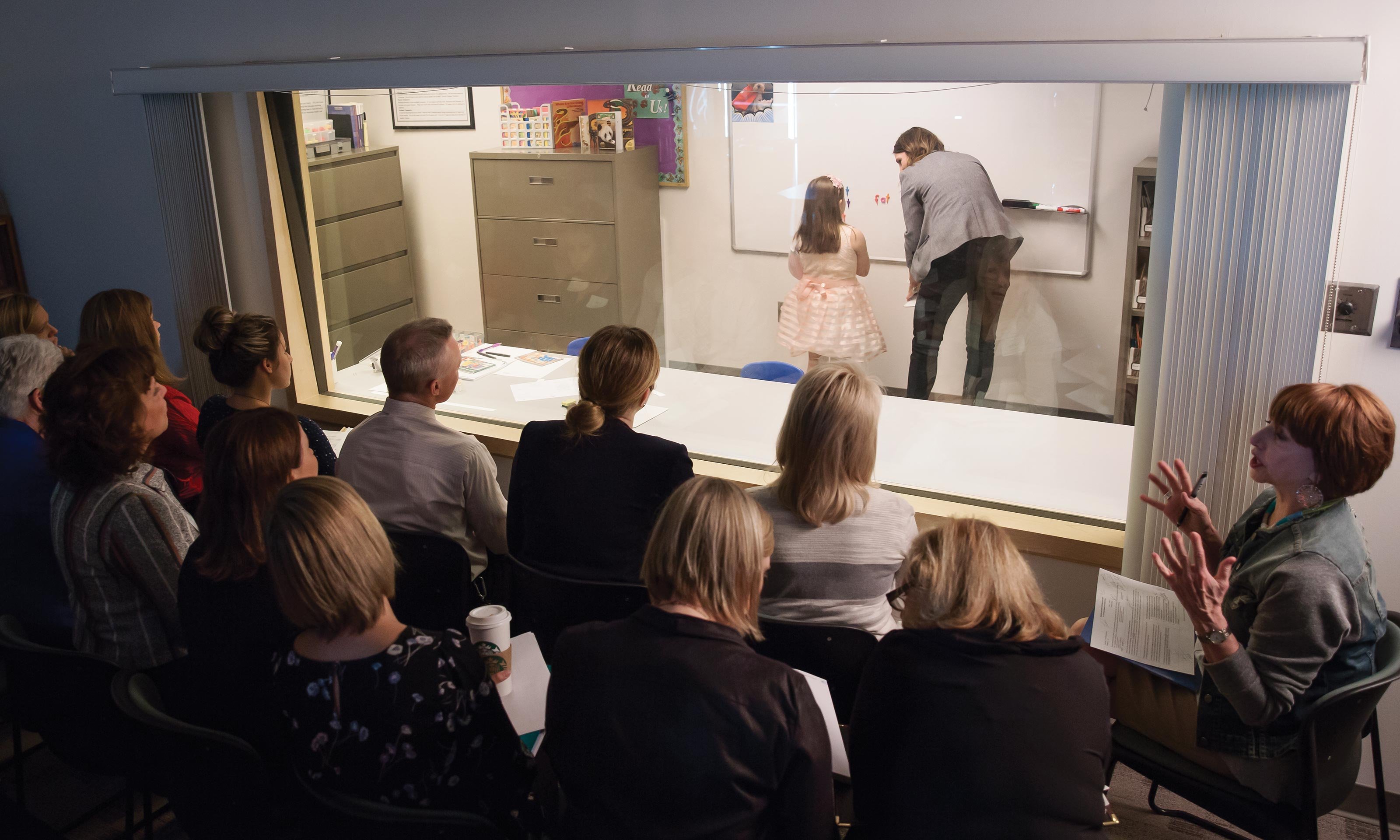- YouTube
- TikTok
Christin Silagy’s son, Parker, was having trouble reading when he started the Reading Recovery early literacy intervention program during his first grade year in the Troy School District. “I thought I knew what I was getting into, but Reading Recovery was totally different from what I anticipated in a great way.”
Progress was slow at first, but the program was persistent.
“When he finished Reading Recovery, he sort of teetered right around grade level for a while, which I think is pretty normal,” she says. “It really showed itself much later. By the end of third grade, his reading level was stable. He started fourth grade at grade level. By winter, he’d already made a year’s growth. Now he’s reading above grade level.”
That kind of result has come to be expected for students who participate in the Reading Recovery program.
Developed in the 1970s by New Zealand researcher and developmental psychologist Marie M. Clay, Ph.D., Reading Recovery’s highly effective instructional model is based on rigorous studies of techniques to help teachers reverse literacy failure in the shortest possible time.
Since then, the Reading Recovery program has been exported to schools around the world and continues to impact the lives of young children struggling with critical literacy skills.
“By the time [the students] finish their lessons, they reach average performance levels, and the vast majority are able to continue learning alongside their peers in their regular first grade classroom without further need for intervention. That’s a remarkable outcome when they were initially the bottom 10-20% of children in their first-grade cohort.”
Mary Lose

Alex Godin
Oakland University’s Reading Recovery Center is one of just 18 across the U.S. and serves more than 162 schools in Michigan.
This year, the center added two new regional sites to its growing list of locations, including Oakland County’s Troy School District and another in the Warren Woods Public Schools of Macomb County.
“These new sites are quite progressive,” says Mary Lose, Ed.D., a professor in Oakland University’s Department of Reading and Language Arts and director of the Reading Recovery Center. “The plan is to increase literacy expertise across the districts by providing specialized training for their teachers through our Center’s three, year-long, graduate-level programs in
Reading Recovery, Literacy Lessons, and Literacy Support.”
Supported by a trove of research data gathered from students that have participated in Reading Recovery since the early 1980s, the program’s effectiveness has only grown more pronounced. In the most recent school year, 70 percent of Michigan students who completed a Reading Recovery intervention program in 20 weeks or less were reading at or above grade level. In contrast, when these students started Reading Recovery, they were significantly below grade level compared to their classmates.
Maintaining the program’s rigorous research emphasis on a global scale would likely be impossible, however, if it were not for the collaboration between the University’s training center, schools and school districts.
Since 1991, OU’s Reading Recovery center has worked with local district leadership to organize the program within their schools while training individual teachers in Reading Recovery theory and instruction.
Alongside her regular responsibilities providing certification and professional support to Reading Recovery teacher leaders and teaching Reading Recovery children, Lose has spent the last year busily working one-on-one to train new teacher leaders. Kristin
Piotrowski is the new teacher leader in the Troy School District (TSD). Richelle Barkley, who previously trained as a Reading Recovery teacher leader under Dr. Lose, has joined the new Warren Woods Macomb Area Site to become its teacher leader.
The TSD has employed Reading Recovery teachers in its schools since the program was first brought to the U.S. in the 1980s, but teachers can only provide Reading Recovery instruction after attending training sessions at a designated Reading Recovery Site. School districts earn that designation after bringing on a teacher leader who has been certified by a Reading Recovery Center like OU’s to train teachers in Reading Recovery.
Thus far, TSD has not been a designated Reading Recovery Site, and so TSD’s teachers have had to travel to the nearest site — Bloomfield Hills Schools — to acquire the training necessary to teach their own Reading Recovery students.
Things have changed at TSD within the last two years, however, thanks in no small part to the work of Kris Griffor, TSD’s Assistant Superintendent for Elementary Instruction, who has been 48 Oakland University Magazine | Fall 2017 instrumental in a successful drive to have the district officially designated as a Reading Recovery Site. Lose’s work with Kristin Piotrowski has been an essential component of TSD’s push to earn that designation. Moving forward, Piotrowski will be the TSD Reading Recovery Site’s resident Teacher Leader, charged with training the district’s teachers in Reading Recovery and working as a liaison between the TSD Reading Recovery Site and the Reading Recovery Center at OU. In preparation for her new role, Piotrowski’s training involved rigorous academic coursework in reading difficulties, literacy, teaching, and learning theory alongside an intensive clinical practice element, consisting of actual teaching sessions supervised by Lose.
That adds up to 20 credits of post-master’s level instruction. Piotrowski, Griffor, and Lose are all in agreement that the work is well worth the effort, however.
“We’re working on ramping up our instruction in literacy for all of our students, not just Reading Recovery students,” Griffor says. “But we know that’s the best intervention that the research in the field has found. We want to make sure that we’re giving our kids the best there is.”
Time and again, Reading Recovery has simply proved to be the most effective means of helping students who struggle with developing critical literacy skills.





The outcomes Reading Recovery achieves are impressive and translate into some astonishing individual success stories. One student that completed the Reading Recovery program with Piotrowski this past year, for example, began the school year speaking almost no English. Now, she’s not only reading near grade level, but also speaking English well enough to actively participate in class instruction and discussions with peers.
While bringing students’ literacy skills up to grade level is certainly an admirable goal, however, achieving that goal translates to further benefits for the students who complete the program — and for the district as a whole — as they continue along the course of their education.
“The children that feel bad for themselves because they’re struggling with literacy start to gain confidence,” Lose explains. “Classroom teachers say they’re starting to participate more. They’re excited about reading and writing. They want to check out books, they want to read to others.”
That new self-confidence and excitement about their learning leads to improved performance in the students’ other classroom endeavors. Having better-prepared students also makes providing instruction to all students much easier for the district’s teachers and reduces the need for costly intervention programs later on in the students’ academic careers.
“When the children are no longer significantly low-performing, it makes it easier to teach in the classroom,” Lose says. “And it’s a cost-savings when schools don’t have as many low-performing children. Those resources are freed up for the children who truly need long-term intervention.”
With those kinds of results, it’s no surprise that the leaders and educators at OU’s School of Education and Human Resources
(SEHS) are very pleased with the work they’ve been able to do with TSD. As SEHS Dean Jon Margerum-Leys, Ph.D., explained, the Reading Recovery program is a prime example of precisely the sort of partnership the School hopes to establish with schools throughout the state.
“Our mission is to be community-focused, so programs like Reading Recovery that connect us with professions are a mainstay of what we do,” he says. “It’s a two-way street of the University and school district impacting people’s lives. I see that as a matter of practical activism. We’re in the practical social justice business, and I can’t imagine anything more important than helping Michigan’s kids.”
Find reading resources for teachers and parents at oakland.edu/readingrecovery.



 November 16, 2017
November 16, 2017 By Adam DePollo
By Adam DePollo